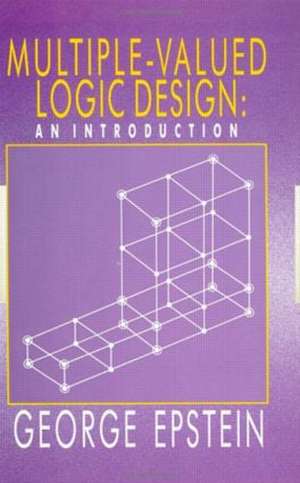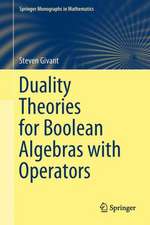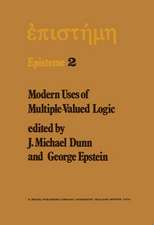Multiple-Valued Logic Design: an Introduction
Autor G Epsteinen Limba Engleză Hardback – 1993
Requiring introductory knowledge in Boolean algebra, 2-valued logic, or 2-valued switching theory, Multiple-Valued Logic Design: An Introduction is an ideal book for courses not only in logic design, but also in switching theory, nonclassical logic, and computer arithmetic. Computer scientists, mathematicians, and electronic engineers can also use the book as a basis for research into multiple-valued logic design.
Preț: 2592.90 lei
Preț vechi: 3241.13 lei
-20% Nou
Puncte Express: 3889
Preț estimativ în valută:
496.22€ • 516.14$ • 409.65£
496.22€ • 516.14$ • 409.65£
Carte tipărită la comandă
Livrare economică 14-28 aprilie
Preluare comenzi: 021 569.72.76
Specificații
ISBN-13: 9780750302104
ISBN-10: 0750302100
Pagini: 370
Ilustrații: 1
Dimensiuni: 156 x 234 x 22 mm
Greutate: 0.75 kg
Ediția:1
Editura: CRC Press
Colecția CRC Press
ISBN-10: 0750302100
Pagini: 370
Ilustrații: 1
Dimensiuni: 156 x 234 x 22 mm
Greutate: 0.75 kg
Ediția:1
Editura: CRC Press
Colecția CRC Press
Public țintă
ProfessionalCuprins
Preface. The digital theme. Logic tables and switching functions. Visualizations: Venn diagrams, Karnaugh maps, Hasse diagrams; from logic tables to lattices. Post algebras. Sub-post algebras; double Heyting algebras. Arithmetic operations. Finite state diagrams. Axiomatic propositional calculi. Special functions. Special applications. Answers to even-numbered exercises. References. Index.
Recenzii
"… worthwhile as a course text in this area or for reference for those outside the field; however, prior knowledge of design with binary logic helps considerably in the understanding of the logic and algebra presented."
-Australian and New Zealand Physicist
-Australian and New Zealand Physicist
Descriere
Multiple-Valued Logic Design: An Introduction explains the theory and applications of this increasingly important subject. Written in a clear and understandable style, the author develops the material in a skillful way. Without using a huge mathematical apparatus, he introduces the subject in a general form that includes the well-known binary logic as a special case. The book is further enhanced by more 200 explanatory diagrams and circuits, hardware and software applications with supporting PASCAL programming, and comprehensive exercises with even-numbered answers for every chapter.

















